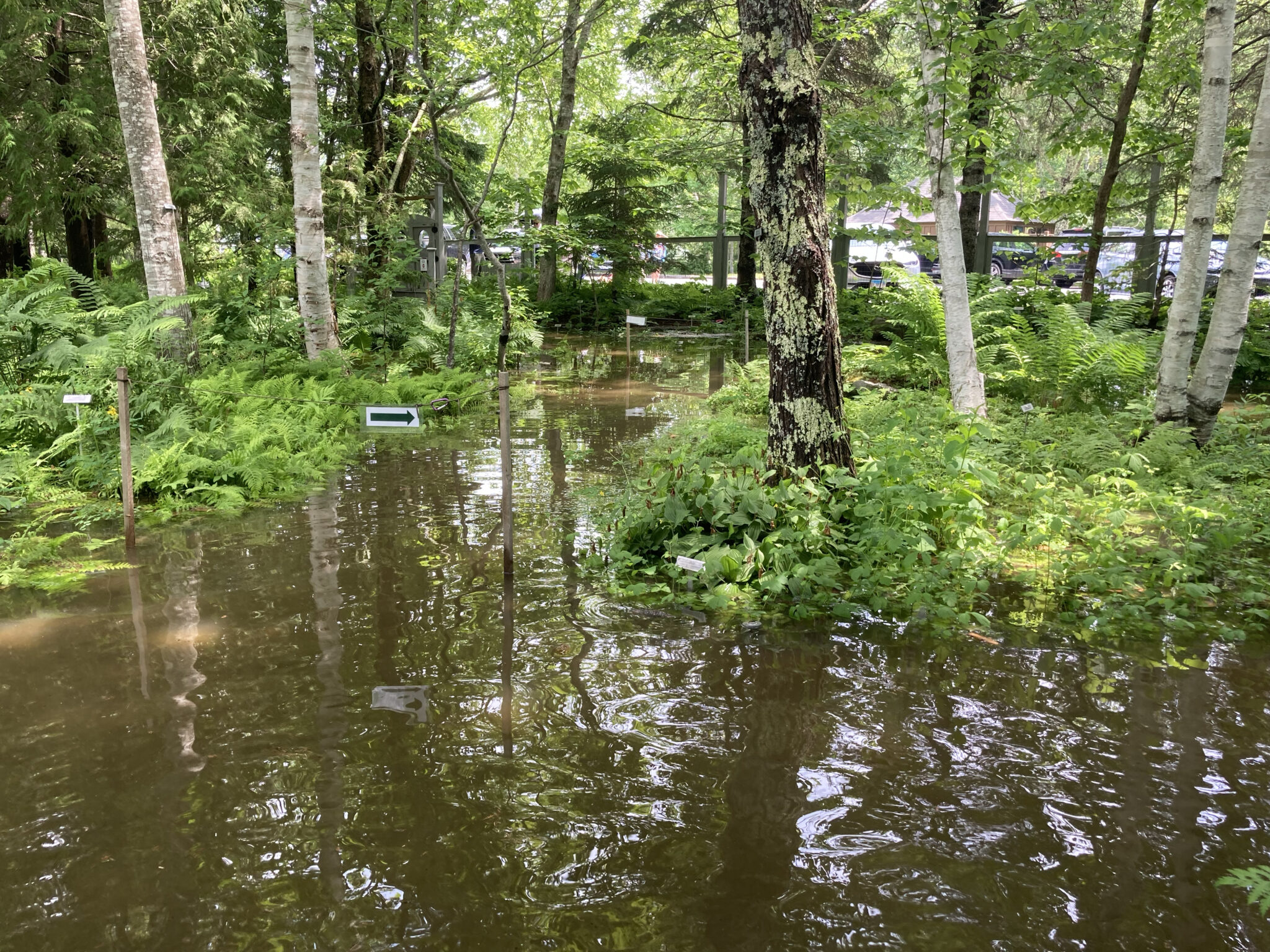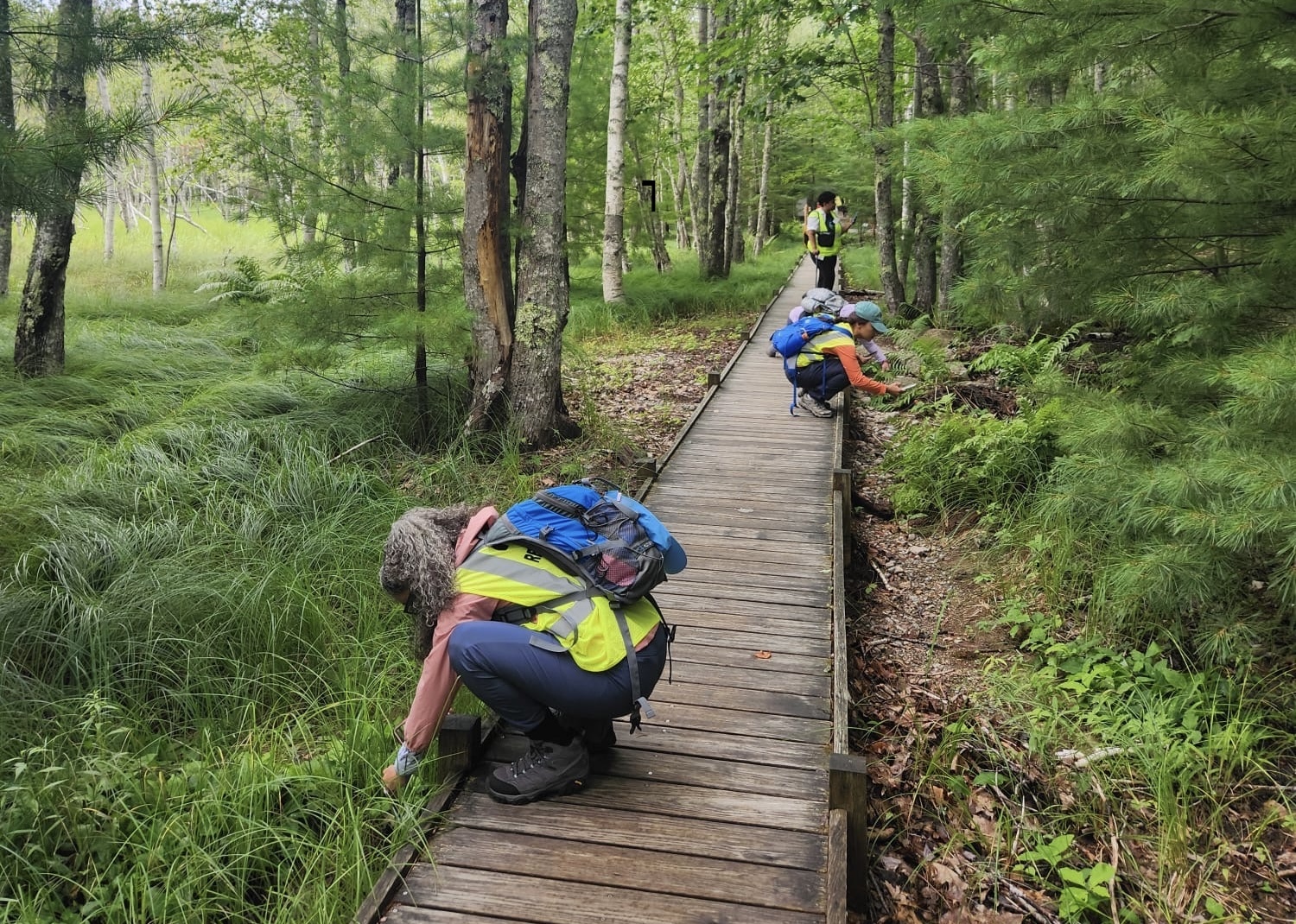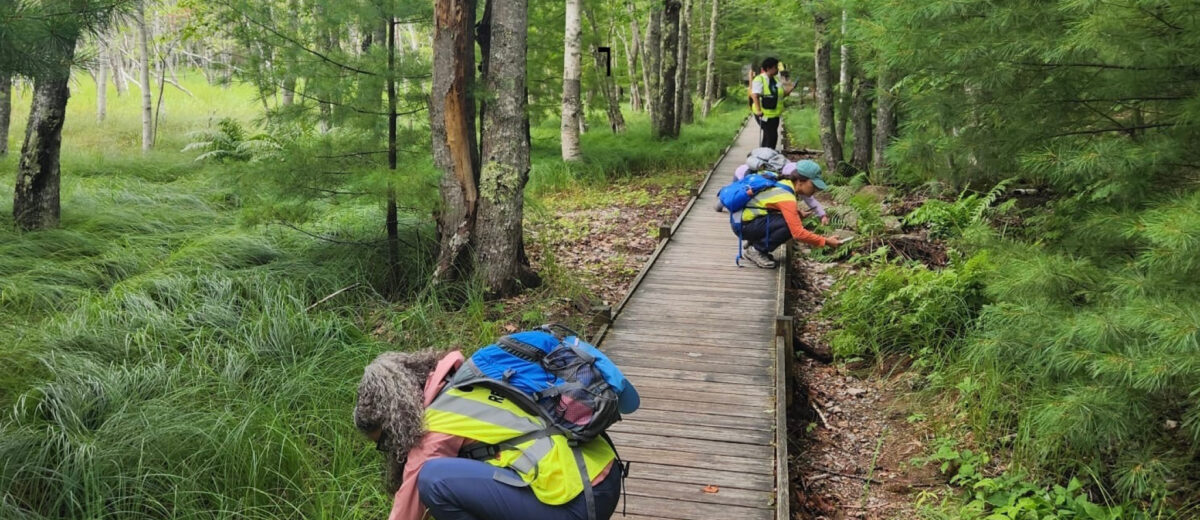by Suzannah Buzzell
“Welcome to Sieur de Monts” I say, handing out yellow vests to the current Earthwatch team. This is my favorite field day we do with Earthwatch, in part because I get to watch citizen scientists from all over the country engage with iNaturalist and species that interest them, and in part due to my own love of the area.
My first introduction to Sieur de Monts was in 2021 as the Wild Gardens Intern through Friends of Acadia. When I showed up for my second week of work, the gardens were under three feet of water. The hydrology of the area has been severely altered, which changes the way water flows from the Tarn through the Great Meadow wetland. This has resulted in both dramatic flooding of Sieur de Monts and excess water draining too rapidly from Great Meadow.
Wetlands are incredibly productive areas in terms of biodiversity and climate change resilience, and restoration of these systems has become of high interest within recent years. Great Meadow is no exception, and actions such as invasive species removal and infrastructure improvements are underway with the goals of improving native vegetation conditions. Here’s where our Earthwatch citizen science initiative comes in: by using iNaturalist, biodiversity of the areas along the Hemlock and Jesup Paths is documented and added to a database that National Park Service staff use to guide management decisions in the area and evaluate impact of restoration actions.

This year, we emphasized three areas: forest pests (such as beech leaf disease), invasive species (for targeted management and to understand the ratio of native to invasive plants as a system health indicator), and flowering plants (for phenology), along with what taxa each person found an interest in. The project contributes so much meaningful data for the management of the Park, but it is truly acquainting each Earthwatch group with the flora of Maine and seeing each individual dig into their own ecological interests that is gratifying for me. I was sent on a similar exploratory stroll on my first day at the Wild Gardens, and on every trip down these paths we took this summer, I said hello to each of the thirteen fern species I met three years ago.
While we meander down the trails, the Earthwatch participants find mushrooms, salamanders, snakes, wildflowers, shrubs, trees, and everything else the area has to offer. Dutifully, they document their findings and allow me to play naturalist. I show them how you can identify a white birch from a yellow birch by smell, how cinnamon ferns are twice-cut and like wet soil, but lady ferns are thrice-cut and like a drier soil, and how the red maples in the Great Meadow turn scarlet earlier than other trees in the park.

There are things within Sieur de Monts that feel like they are unchanging, like the barred owls that nest along the Hemlock Path, the stately hemlocks for which the Hemlock Path is named, or how the fireweed, meadowrue, and Canada lily bloom simultaneously in the meadow of the Wild Gardens, but the data demonstrate that Acadia is changing. Hemlocks are threatened by hemlock wooly adelgid, changing temperatures cause earlier annual blooms, and these shifts affect the whole intricate community that can’t adapt faster than change is wrought. By documenting these species in iNaturalist, we create baseline documentation for future years of data to be compared to.

While Earthwatch volunteers and other citizen scientists are essential for this work here in the park, it is also important that the same care and excitement for species and the documentation of them happens elsewhere. One of the most important things to me this summer was that we gave citizen scientists the tools and knowledge about why applications like iNaturalist are so essential, along with why it is important to bring what they learned with us home with them. When hosting a group of teachers from New York City, it was incredible to hear about how they wanted to incorporate bioblitzing into their classrooms. It feels like such a huge success when our team members return to their homes and continue posting on iNaturalist, and I can only be grateful for how Sieur de Monts has had an impact on them like it has on me.
